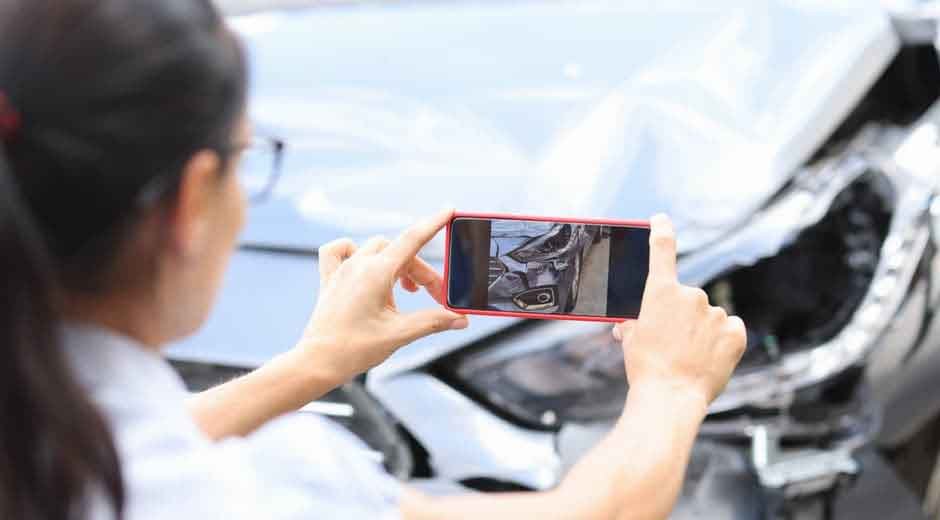Vehicle accidents can be unexpected, hectic, and emotionally exhausting situations, leaving people involved unsure of what to do next. Beyond coping with immediate physical injuries and mental trauma, it is critical to concentrate on acquiring and preserving evidence to create a compelling case in the aftermath. Understanding what types of evidence are valuable and how to collect it efficiently can make all the difference when reconstructing the story of an accident.
The Importance of Photographic Documentation
Photographic evidence is one of the earliest and most important pieces of evidence after a car crash. Taking images of the accident scene, the damage to the cars, the injuries, and the conditions around it will make a clear record of what happened. Pictures show things that could be forgotten or distorted later. For example, you can keep track of the exact locations of cars, skid marks, road signs, traffic lights, and weather conditions. These kinds of pictures can also show any apparent injuries, which can be very important for medical claims or to show how serious the incident was. It is important to take these pictures right after the incident since the scene could be altered because of emergency response activity or other outside influences.
The Role of Witness Testimony
Witness testimony is another valuable piece of evidence that can help us understand what happened in an automobile accident. Witnesses often provide a different perspective than those who were directly involved, making their descriptions of events more objective. Their statements can clarify any uncertainty or demonstrate that erroneous reports are incorrect. Witnesses that are trustworthy can describe what they observed before, during, and after the crash. This could include traffic light signals, the driver’s behavior, or anything else that was unusual, such as distractions or road dangers. Obtaining the contact information of witnesses on the scene ensures that their tales can be confirmed and followed up on later if necessary.
Significance of Official Accident Reports
Obtaining formal accident reports, such as those filed by law enforcement personnel, is another important step toward constructing a compelling case. These reports are typically created after officers arrive at the scene and conduct an investigation. The documentation usually includes a detailed description of the incident, diagrams, statements from involved parties, and sometimes citations for traffic violations. You can easily obtain a California highway patrol accident report by submitting a California highway patrol accident report request form, which provides access to official records that can be used in court proceedings or insurance claims. This report is often regarded as a neutral and credible source, lending significant weight to the evidence presented. It’s crucial to request a copy promptly, as it becomes part of the permanent documentation of the event.
Medical Records and Injury Documentation
Medical records and documentation of injuries incurred during a vehicle crash are crucial pieces of evidence. Medical reports explain what kind of bodily injury was done, what therapies were given, and what the future holds. These documents not only back up the injury claims, but they also show a clear correlation between the incident and the health problems that followed. Medical proof is important for showing how serious injuries are, which might change how much money you get or the outcome of the case. It also helps to fight back against claims that the injuries were already there or had nothing to do with the event.
Preservation of Physical Evidence
Keeping tangible evidence from the crash scene or the cars involved is also very important for making a good case. This includes broken components of cars, trash on the road, and anything else that may have caused or been caused by the crash. Such evidence can tell you things like how fast the cars were going, where they hit, and how the crash happened. In rare circumstances, the placement of skid tracks or shattered glass can show who had the right way or if any attempts were made to avoid an accident. To keep this kind of evidence, you need to be vigilant and act quickly, which typically means hiring professionals like accident reconstruction experts.
Conclusion
Building a compelling case following a car accident requires a rigorous and thorough approach to evidence collection and preservation. Photographs, witness testimony, official reports, medical records, physical evidence, and digital data are all forms of evidence that let us piece together the truth in our own way. Taking precautionary and timely efforts to safeguard this evidence is the first step toward establishing a strong case in court or with an insurance company. Without this type of proof, it is considerably more difficult to determine who is at fault or how much harm was caused.






